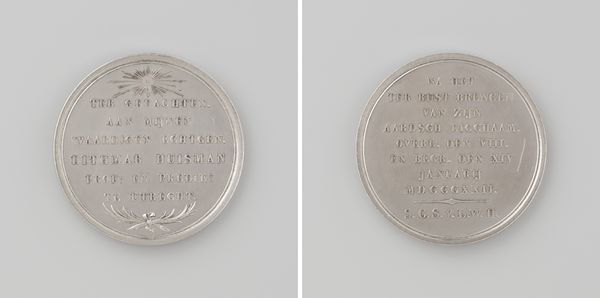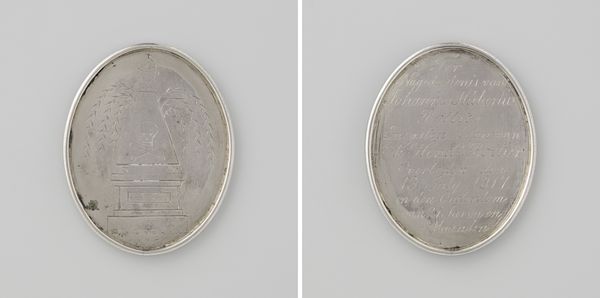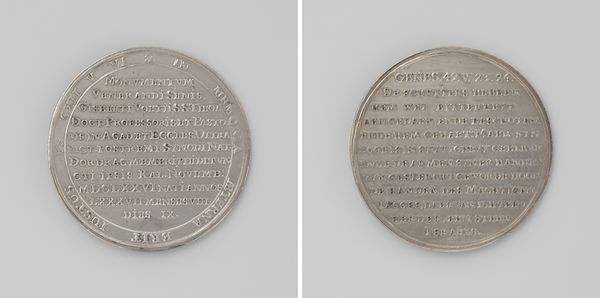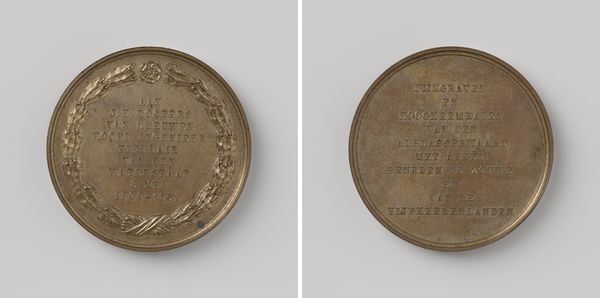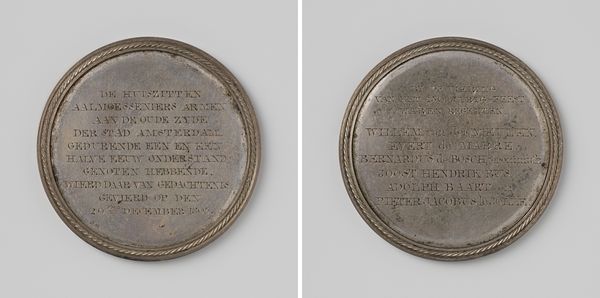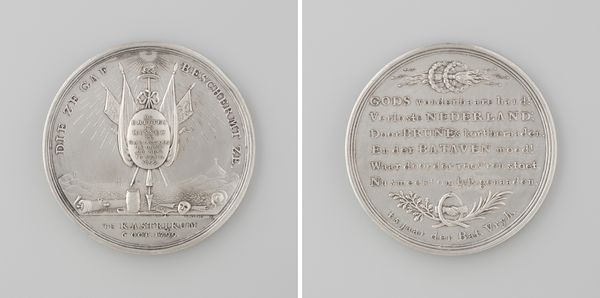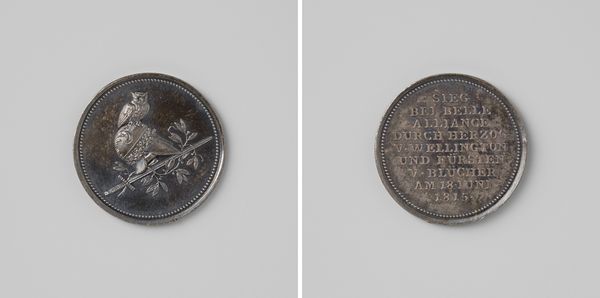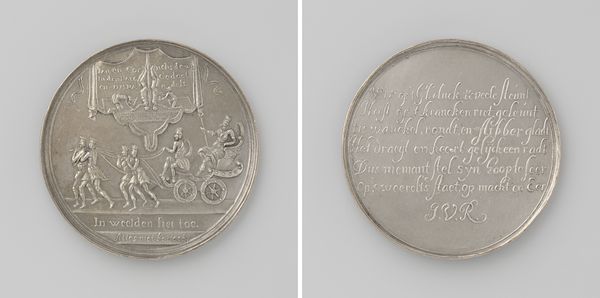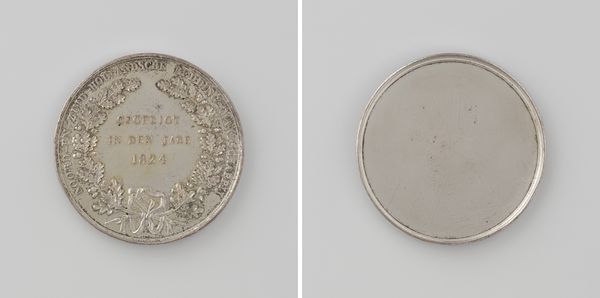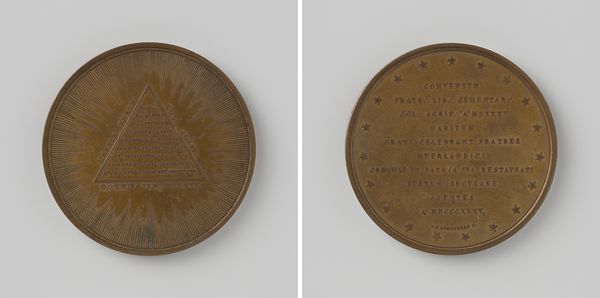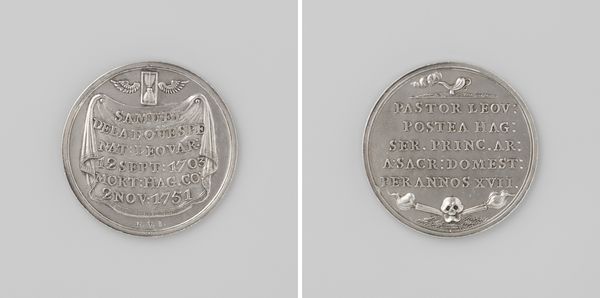
Overlijden van Hermanus Udeman, priester, pastoor, overste van het begijnhof en provisor van het seminarie te Warmond 1822
0:00
0:00
metal, engraving
#
portrait
#
neoclacissism
#
metal
#
vanitas
#
history-painting
#
engraving
#
miniature
Dimensions: diameter 5.9 cm, weight 24.46 gr
Copyright: Rijks Museum: Open Domain
Curator: Here we have an engraving from 1822 titled "Overlijden van Hermanus Udeman, priester, pastoor, overste van het begijnhof en provisor van het seminarie te Warmond," created by an anonymous artist. It’s a miniature, etched into metal. Editor: Wow, it's so precise, like looking into a perfectly still, silver pool. But there’s a definite chill to it, don’t you think? A polished melancholy. Curator: Absolutely. Considering the context, that somber mood is intended. This piece falls within the Neoclassical art movement, incorporating vanitas themes which reflect on mortality and the transient nature of life, ideas highly relevant within religious spheres of the time. Editor: I get that. The skull at the bottom – definitely not subtle! It feels so… final. And yet, cradled by these delicate, almost hopeful, laurel branches. The whole thing is so tiny, yet carries this enormous weight. Curator: The use of metal as a medium contributes to its permanence, almost contradicting the "vanitas" message, which would’ve held strong symbolic resonance for the commissioner of this piece. It challenges ideas of impermanence in physical form, especially pertinent during a period of intense social and philosophical shifts in Europe. Who was he? What was his importance? And to reflect it in the Neoclassical movement elevates and almost enshrines. Editor: Almost makes you want to hold it, doesn’t it? This small, cold, concentrated grief... and, I don't know, maybe comfort too, pressed into metal. It really asks, "What matters, in the end?" and in doing so, it creates the space for personal interpretation. Curator: Yes, and by situating this artwork within discussions around identity, mortality, and the cultural weight of remembrance in the context of the Church in that period, we’re given opportunity to explore how Neoclassical aesthetic and traditional artistic forms could intersect with political realities in that period. Editor: It’s interesting how something so seemingly straightforward—a commemorative engraving—can lead us down such intricate paths of reflection and critical thought. So much communicated in such a contained artistic space. Curator: Indeed. This work is more than just a memento mori; it's a quiet dialogue between art, death, and historical context.
Comments
No comments
Be the first to comment and join the conversation on the ultimate creative platform.
